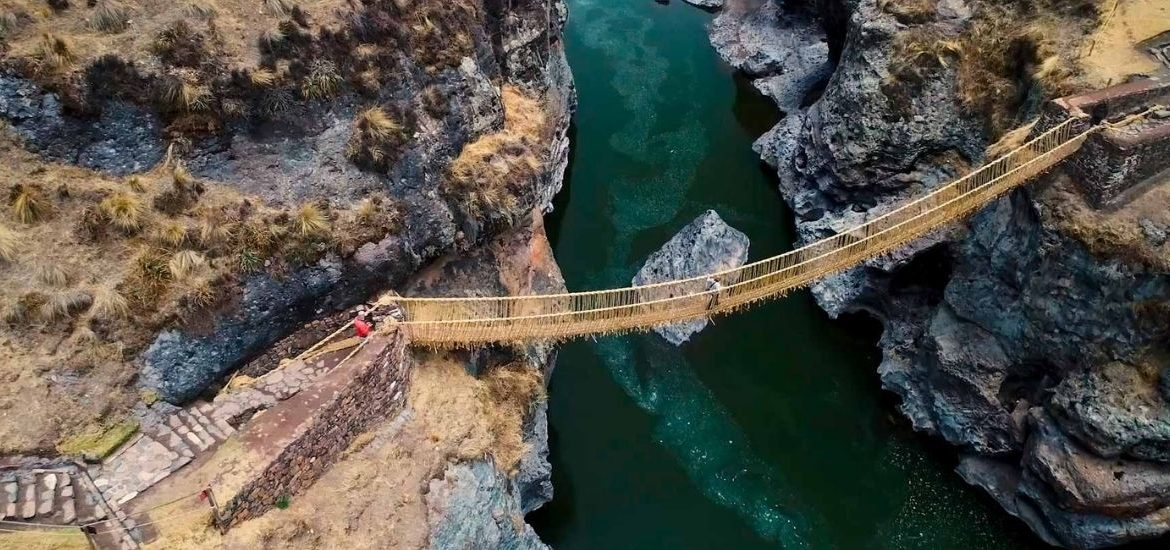The Incas have definitely left a mark on our country and the Q’eswachaka bridge is the living legacy of the ancient traditions that continue deeply rooted in our people. For those who didn’t know, the Inca Trail extended for over 30,000 km and some part of it passed by the most rugged areas of the Andes.
To overcome this limitation, the Incas invented a series of handwoven bridges. The Q’eswachaka is the last handwoven Inca bridge alive and is located over the rumbling Apurimac River in the Quehue district. This ancient bridge is renovated every year in June by the surrounding communities in that region of the Andes.
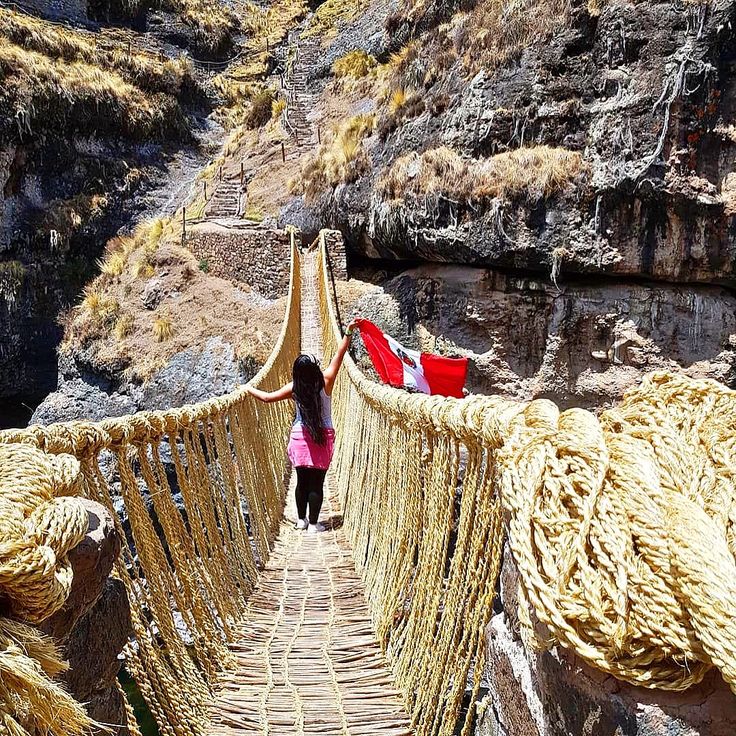
The handwoven bridge comprises a nearly 600-year-old tradition passed by generations since Inca times, allowing locals to reconnect with their ancestors and, most importantly, their people. Nowadays, the Q’eswachaka Bridge is an unmissable attraction in Cusco and has become even more popular over the years.
This bridge has been gathering hundreds of visitors during its renovation and celebration every year. Likewise, this famous Inca bridge was declared a UNESCO Intangible Cultural Heritage in 2013 due to the vivid cultural scene it comprises and gathers every second week of June. Here we’ll tell you everything about it.
About the Q’eswachaka Bridge
The “Qhapaq Ñan”, or the main Andean road was the largest pre-Columbian road in the continent, connecting about 6 countries in South America on a trail network intended to bind the entire Tahuantinsuyo Empire. There were several handwoven bridges along the trail and though almost all of them decayed, Q’eswachaka was the last one standing.
According to chroniclers, the Inca bridges were important for connecting different rugged roads within the Andes mountains. These suspension bridges allowed the passage of soldiers, messengers, and officials through steep canyons and gorges.
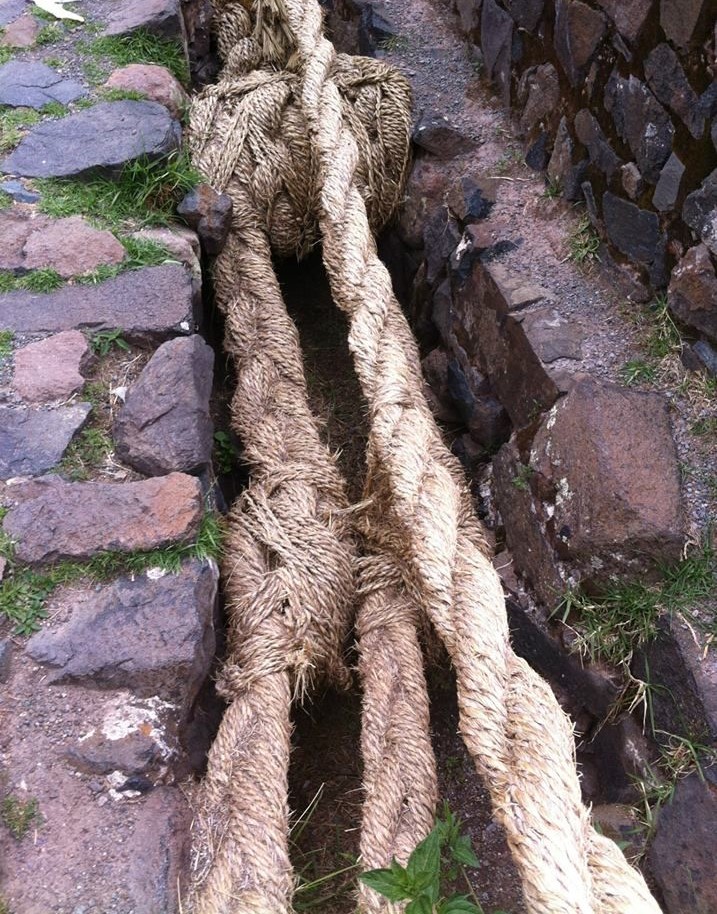
These bridges were maintained every year and it was a social obligation to the surrounding communities according to Inca laws. After the fall of the Inca Empire, the bridges survived for centuries and continued to serve as vital links in the Andean road system until the 20th century.
Currently, the Q’eswachaka bridge offers much more than a passage over the Apurimac River since it allows the Chaupibanda, Choccayhua, Huinchiri, and Ccollana Quehue communities to bond and continue a beautiful tradition that binds them socially and spiritually.
Q’eswachaka Renovation Ritual
The Andean villages that surround this ancient bridge have been contributing to its preservation for many years. The renovation ritual takes place every year on the first Sunday of June and takes about 4 days.
However, this process begins days before, when part of the community gathers to collect the “q’oya”, a strong vegetal fiber used as the main material of the bridge. Once they have enough, they let it dry for a few days to later smash it and let it soak so it can harden.
After that, each family proceeds to elaborate on a quest, which is basically a rope made out of the q’oya fiber. Women are in charge of braiding this 29-meter-long rope during the first day of the ritual as well.
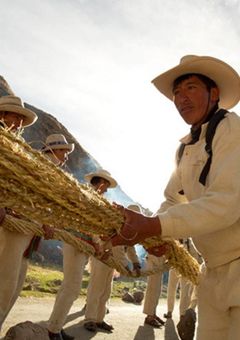
Day 1 | Apu Quinsallallawi Ritual – Q’iswas Braiding
As you may know, the Andean religion honors the elements, the mountains, and the Earth itself, this last one is one of the principal deities of their culture. To start the renovation process of the bridge, locals gather at sunrise to pay respects and ask permission to the Apu Quinsallallawi.
The ritual is led by a ‘Paqo,’ an Andean priest who acts as an intermediary between the community and the “Apus”, the so-called mountain deities. They make offerings to these mighty deities right before starting with the activities, that way they ensure the Apu’s protection throughout the whole process until it has to be renovated again.
Afterward, each family must contribute with a q’iswa, that way everyone gets involved from the very beginning of the renovation ritual. Once all q’iswas have been gathered, they lay them down on a nearby highway road to later braid them all together forming thicker and more resistant ropes called ‘Q’eswasca.’
At the end of the day, the q’eswasca are taken to the edge of the bridge and are left there until the next day.
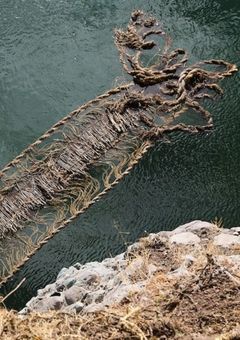
Day 2 | Pachamama Offerings – Old Bridge Removal
Before starting with the activities, locals gather to perform another ritual, honoring Mother Earth this time, afterwards, they’ll continue with the reconstruction work.
On this day, they’ll place 4 ropes or q’eswascas that will be used as the base, these will be tied up at each end of the bridge. Once the base is placed, they’ll proceed to tie the q’iswas which will function as handrails.
The entire process will be supervised by an Andean engineer called Chakaruwaq, who is in charge of leading the construction and making sure that everything is being set up correctly.
The communities work together to pull the ropes and stretch them out. Finishing up, they’ll take out the stone nails that hold the old bridge and proceed to take it down, letting it fall to the river.
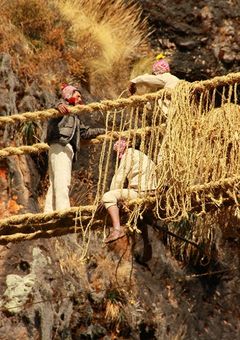
Day 3 | Finishing Touches
After all the hard work of the previous day, now is the time to improve the stability of the bridge. On the third day, the Andean engineer organizes the team into two groups and will start hand-weaving the sides of the bridge, joining the handrails and base together.
Since this process can take many hours to complete, another group is in charge of gathering materials to build the ‘carpet’ that will cover the base of the bridge.
This element is composed of leaves, branches, q’iswas, and another material called ‘Callapo’ that will serve to give the bridge more stability. Finishing the construction, the local authorities will cross the 29-meter bridge to ensure it is perfectly made. That way, they would have finished the renovation of the last handwoven Inca bridge.
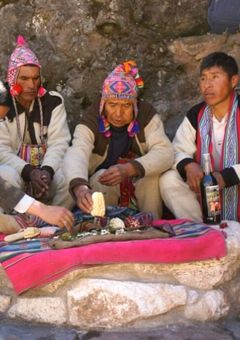
Day 4 | Celebration
In case there are some final touches to make, they’ll do it at the start of the day. Once everything’s done, all the communities gather to celebrate the end of the renovation ritual.
The festival starts as soon as they finish building the bridge with typical dances, food, and alcohol. A celebration that lasts the entire day, honoring their ancestors and the traditions that bind them together.
As you can see Q’eswachaka is not a common bridge since it doesn’t only connect the land but the people that live near it. If you’d like to visit this attraction, make sure to contact our consultants.
Cusco holds an extensive cultural expression and we’d love to show you everything about it! Don’t miss this opportunity and check out our Peru travel packages while you’re here and start planning the perfect trip itinerary through the ancient lands of the Incas. Peru is waiting for you to surprise you!
Viagens Machu Picchu, journeys that inspire, moments that last.
| Spanish > Viagens Machu Picchu |
| English >Viagens Machu Picchu |
| Portuguese > Viagens Machu Picchu |

